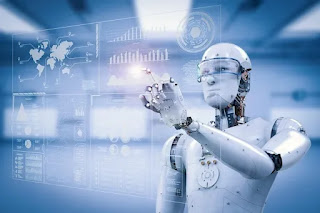The Future of Energy: How Smart Grids and IoT are Changing the Landscape
The future of energy is rapidly evolving with the advent of smart grid technology and the Internet of Things (IoT). Smart grids are advanced power systems that use digital technology to monitor and control the distribution of electricity, while IoT refers to the growing network of connected devices that can communicate with each other. Together, these technologies are changing the way we generate, distribute, and consume energy, and are helping to create a more sustainable and efficient energy system.
One of the key ways in which smart grids and IoT are changing the energy landscape is through the use of advanced data analytics. Smart grid systems use sensors, meters, and other devices to collect data on energy consumption, generation, and distribution, and then use this data to optimize the performance of the grid. For example, smart grids can use data on energy consumption to predict peak demand and adjust the production of electricity accordingly, which can reduce the need for expensive power plants and lower the cost of electricity. Similarly, IoT devices can be used to monitor the performance of individual appliances and devices, and adjust their energy consumption in real-time to reduce energy waste.
Another way in which smart grids and IoT are changing the energy landscape is through the integration of renewable energy sources. Smart grids make it possible to integrate large amounts of renewable energy, such as solar and wind power, into the grid, by using advanced control systems to match the supply of energy with the demand. Similarly, IoT devices can be used to monitor the performance of renewable energy systems, such as solar panels and wind turbines, and adjust their output in real-time to optimize their performance. This helps to make renewable energy more cost-effective and increases its adoption.
Smart grids and IoT are also changing the way we use and manage energy in our homes and buildings. Smart home systems, for example, use IoT devices to monitor and control the energy consumption of individual appliances and devices, such as lights, thermostats, and appliances. This helps to reduce energy waste and lower energy bills. Similarly, building automation systems can be used to optimize the energy performance of buildings, by controlling lighting and temperature, and monitoring the energy performance of buildings.
Smart grids and IoT are also having a major impact on the way we use and manage energy in our cities. Smart cities use technology to collect and analyze data in order to optimize the performance of city services and improve the quality of life for citizens. For example, smart transportation systems can use technology to optimize traffic flow, reduce congestion, and improve the efficiency of public transportation. Similarly, smart lighting systems can use IoT devices to monitor and control the lighting of public spaces, and adjust the lighting based on real-time data on traffic and pedestrian movement. This can help to reduce energy waste and improve the safety and livability of cities.
Smart grids and IoT are also playing an important role in the development of microgrids. Microgrids are small, localized power systems that can operate independently of the traditional grid. These systems are particularly useful in remote or disaster-stricken areas, where traditional grid infrastructure may not be present or functional. Smart grids and IoT can be used to monitor and control the production and distribution of energy in microgrids, making them more efficient and reliable.
However, despite the many benefits of smart grids and IoT, there are also concerns about their implementation. One of the main concerns is the cost of upgrading infrastructure and deploying new technologies. This requires significant investment from governments and the private sector, which can be a major barrier to the adoption of smart grids and IoT. Additionally, there are also concerns about the potential impact of smart grids and IoT on privacy and security, as the collection and analysis of data can raise concerns about the protection of personal information, and the potential for misuse of data.
In conclusion, the future of energy is rapidly evolving with the advent of smart grid technology and the Internet of Things (IoT). Smart grids are advanced power systems that use digital technology to monitor and control the distribution of electricity, while IoT refers to the growing network of connected devices that can communicate with each other. Together, these technologies are changing the way we generate, distribute, and consume energy, and are helping to create a more sustainable and efficient energy system. However, it is important to consider the potential impact of smart grids and IoT on privacy and security and the cost of implementation and ensure that appropriate measures are in place to mitigate any negative effects. As smart grid and IoT technology continues to develop, it will play a central role in shaping the future of energy and the way we use and manage energy in our homes, buildings, and cities.




Comments
Post a Comment